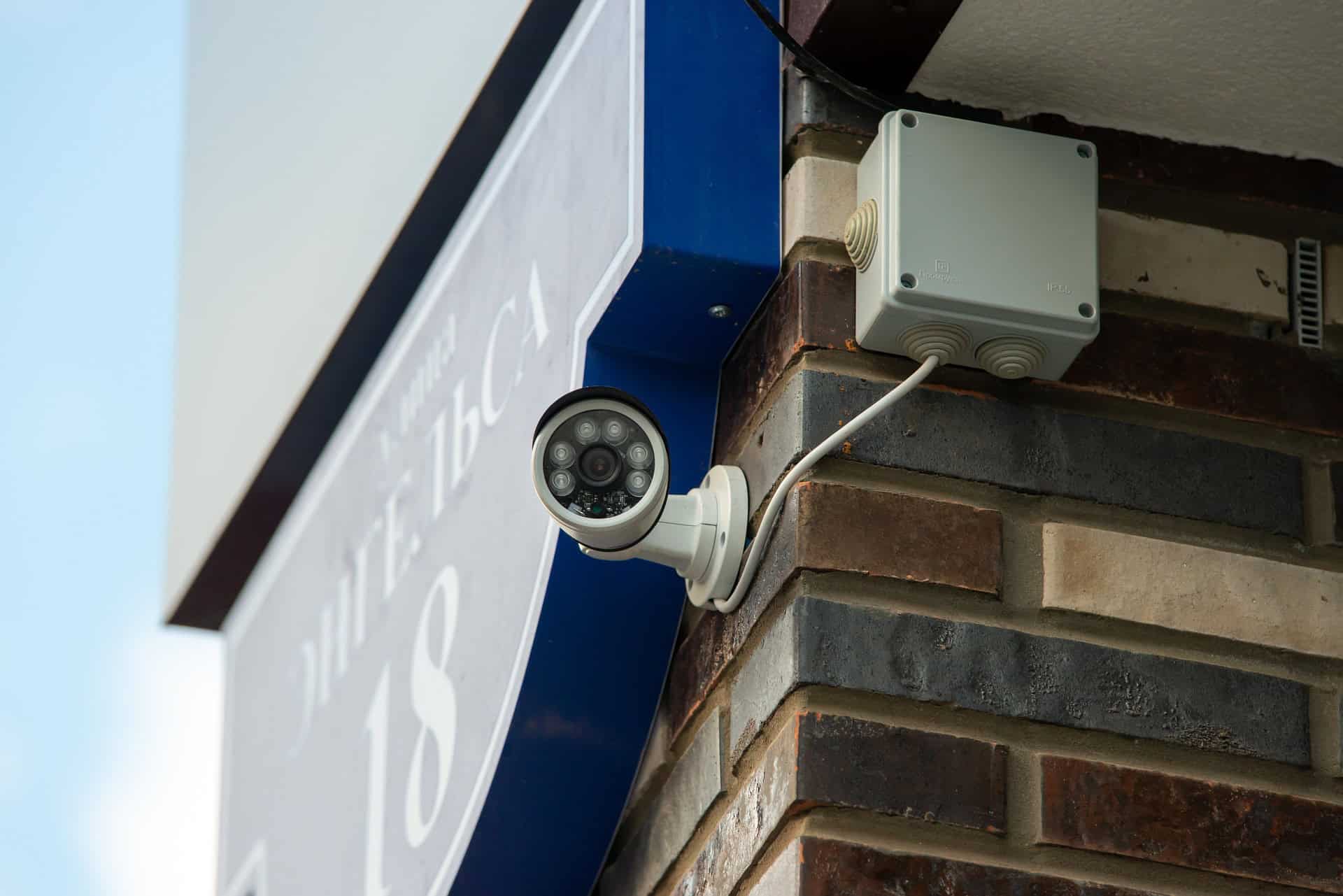Are you looking for ways to keep your CCTV cameras hidden from view without sacrificing security? While security cameras are an effective way to deter crime and keep your property safe, they can also be a target for theft or vandalism. By hiding your cameras in clever ways, you can ensure that they remain effective while also keeping them out of sight.
One way to hide your CCTV cameras is to camouflage them with natural surroundings. For outdoor cameras, consider placing them among trees, leaves, and bushes, which can help them blend in with the environment. You can also use decorative objects, such as birdhouses or planters, to conceal your cameras in plain sight.
Another option is to use hidden or disguised cameras. These cameras are designed to look like everyday objects, such as clocks, smoke detectors, or light bulbs. By using these types of cameras, you can keep your property under surveillance without drawing attention to the fact that you have cameras installed.
Assessing Your Security Needs
Before you start hiding your CCTV cameras, it’s important to assess your security needs. This will help you identify the key surveillance areas and determine the level of visibility and concealment required.
Identifying Key Surveillance Areas
To identify the key surveillance areas, you need to consider the layout of your property and the potential entry points for intruders. This could include doors, windows, gates, and any other vulnerable areas. You should also consider areas where valuable items are kept, such as safes, jewelry boxes, and electronics.
Once you have identified the key surveillance areas, you can determine the number of cameras required and their placement. For example, you may need a camera at each entry point and in high-value areas.
Balancing Visibility and Concealment
When it comes to hiding your CCTV cameras, you need to strike a balance between visibility and concealment. Visible cameras can act as a deterrent and make intruders think twice before attempting to break in. However, visible cameras can also be targeted and disabled by intruders.
On the other hand, concealed cameras can provide discreet surveillance without alerting intruders. However, concealed cameras may not act as a deterrent and may not capture clear footage if they are not properly placed.
Consider using a combination of visible and concealed cameras to achieve the right balance for your property. Visible cameras can be placed at entry points and in high-traffic areas, while concealed cameras can be used to monitor sensitive areas.
By assessing your security needs and balancing visibility and concealment, you can ensure that your CCTV cameras provide effective surveillance without sacrificing security.
Innovative Camouflage Techniques
When it comes to hiding CCTV cameras, there are a variety of innovative camouflage techniques you can use to ensure your security system remains effective without sacrificing aesthetics. Here are some clever ways to hide CCTV cameras without sacrificing security:
Using Decorative Elements
One of the easiest ways to hide a CCTV camera is by incorporating it into your home’s decorative elements. For instance, you can use a birdhouse or a fake rock to conceal the camera. You can also use a picture frame with a hidden camera inside or a clock with a built-in camera. These decorative elements are not only functional but also add a touch of style to your home.
Leveraging Natural Surroundings
Another way to hide CCTV cameras is by leveraging natural surroundings. You can hide a camera in a tree, a bush, or a flowerpot. By doing so, the camera blends in with its surroundings, making it difficult to detect. You can also use a bird feeder or a birdhouse with a hidden camera inside to keep an eye on your property.
Implementing Functional Disguises
Functional disguises are another innovative way to hide CCTV cameras. For example, you can use a smoke detector or a motion detector with a hidden camera inside. You can also use a thermostat or an air purifier with a built-in camera. These functional disguises not only hide the camera but also serve a practical purpose in your home.
In conclusion, there are several innovative camouflage techniques you can use to hide CCTV cameras without sacrificing security. By using decorative elements, leveraging natural surroundings, and implementing functional disguises, you can ensure your security system remains effective while maintaining the aesthetics of your home.
Technical Solutions for Discretion
When it comes to hiding your CCTV cameras, technical solutions can be a great way to go. Here are two options to consider:
Wireless Camera Options
Wireless security cameras are a great option if you want to avoid unsightly wires and cables. These cameras connect to your home’s Wi-Fi network, allowing you to view footage remotely from your smartphone or computer. They also typically have a sleeker design than wired cameras, making them easier to hide.
When choosing a wireless camera, be sure to look for one with a strong signal and a long battery life. You’ll also want to make sure it has a high-quality lens and a wide field of view, so you can capture as much footage as possible.
Smart Home Integration
Another option for discreet CCTV cameras is to integrate them into your smart home system. This allows you to control your cameras through a central hub, such as Amazon Alexa or Google Home. You can also set up custom alerts and triggers, so your cameras only record when certain conditions are met.
Smart home integration can also help you hide your cameras in plain sight. For example, you could set up a camera in a fake plant or a bookshelf, and control it with your voice or smartphone. This can make it much harder for potential intruders to spot your cameras, while still allowing you to keep an eye on your home.
Overall, there are many technical solutions available for hiding your CCTV cameras. By choosing the right wireless camera or integrating your cameras into your smart home system, you can keep your home safe and secure without sacrificing style or discretion.
Legal Considerations and Best Practices
Understanding Privacy Laws
Before installing CCTV cameras, it is crucial to understand the privacy laws in your area. In the United States, for example, the Fourth Amendment of the Constitution protects citizens from unreasonable searches and seizures. This means that you cannot install cameras in areas where individuals have a reasonable expectation of privacy, such as bathrooms, changing rooms, or bedrooms.
In addition, some states have specific laws regarding the use of CCTV cameras, such as requiring consent from all parties being recorded. It is important to research and comply with these laws to avoid legal issues.
Maintaining Camera Effectiveness
While hiding CCTV cameras can be a clever way to maintain security without sacrificing aesthetics, it is important to ensure that the cameras remain effective. Make sure that the cameras are positioned in a way that provides clear footage of the area you want to monitor.
Additionally, it is important to regularly maintain and clean the cameras to ensure that they are functioning properly. This includes checking for any damage or malfunctions and replacing any faulty equipment promptly.
By understanding privacy laws and maintaining the effectiveness of your CCTV cameras, you can ensure that your security system remains both legal and effective.
Regular Maintenance and Upkeep
To ensure that your CCTV cameras are working properly and hidden from view, regular maintenance and upkeep are necessary. This will help prevent any obstruction or damage to the cameras that could compromise their effectiveness. Here are some tips to help you maintain and upkeep your hidden CCTV cameras.
Scheduled Inspections
You should schedule regular inspections of your CCTV cameras to ensure that they are working correctly. This will help you identify any issues before they become major problems. During these inspections, you should check the camera’s wiring, lens, and housing for any signs of damage or wear. You should also check the camera’s field of view to ensure that it is not obstructed by any objects.
Addressing Obstructions
Obstructions can prevent your CCTV cameras from capturing clear footage. Therefore, it is important to address any obstructions that may arise. For example, if a tree branch is blocking the camera’s view, you should trim the branch to remove the obstruction. Similarly, if a bird’s nest is blocking the camera’s lens, you should remove the nest carefully without damaging the camera.
Regular maintenance and upkeep are essential for ensuring that your hidden CCTV cameras are working correctly and remain hidden from view. By scheduling regular inspections and addressing any obstructions, you can ensure that your cameras are working
effectively and providing the necessary security for your home or business.
protechuganda.
ProTechUganda is your trusted source for top-quality cameras, delivering unmatched security solutions. Our state-of-the-art surveillance systems are designed for both residential and commercial needs, ensuring crystal-clear footage, reliable performance, and lasting durability. Choose ProTechUganda for cutting-edge technology that prioritizes your safety and provides unparalleled peace of mind. Invest in the best, invest in ProTechUganda for superior security solutions.”
Protech Tips:
To elevate your security setup and project a professional image, focus on optimizing camera angles. Instead of merely concealing cameras, strategically position them to maximize coverage while maintaining discretion. Consider the following:
-
- Install cameras at elevated positions, such as roof eaves or high on walls, to broaden the field of view. This minimizes blind spots and enhances overall surveillance capabilities.
-
- Position cameras to avoid direct sunlight, which can affect image quality. Utilize natural shadows or install sunshades to prevent glare and ensure clear footage during varying lighting conditions.
-
- Plan your camera placements to create overlapping zones. This not only reinforces surveillance in critical areas but also provides redundant coverage, minimizing the risk of a blind spot due to obstruction.
-
- Conceal cameras within the architecture rather than attempting complete invisibility. Blend them with surroundings or use decorative elements that complement the environment, demonstrating a thoughtful and professional approach to security integration.
-
- Prioritize camera placement at key entry points, both obvious and less conspicuous ones. This strategic focus enhances the security perimeter and discourages potential intruders from testing vulnerable areas.
-
- Periodically recalibrate camera angles to account for environmental changes or potential shifts in the surveillance area. This ensures continued optimal performance and maintains the integrity of your security setup.
By mastering camera angles and adopting a strategic approach to surveillance, you not only enhance the effectiveness of your security system but also project a professional image that emphasizes both functionality and discretion.
conclusion
securing your property with CCTV cameras doesn’t have to compromise aesthetics or effectiveness. By carefully assessing your security needs, balancing visibility and concealment, and implementing innovative camouflage techniques or technical solutions, you can maintain a discreet yet robust surveillance system. Remember to stay informed about privacy laws, conduct regular maintenance, and strategically position your cameras for optimal coverage. With these considerations, you can achieve a seamless integration of security measures that not only protect your property but also reflect a professional and thoughtful approach to safeguarding your surroundings.




